Last Updated on April 27, 2023
Plagued with health issues, English Bulldogs have become the poster children for irresponsible breeding. As adorable and good-natured as the breed is, though, pet owners everywhere still clamor to find these pups.
But what if there were a way to keep the English Bulldog’s cuteness without any of its poor health?
Allow us to introduce the Victorian Bulldog, also called the Mollett Victorian Bulldog!
Quick Navigation
- 1 What breeds make up the Victorian Bulldog?
- 2 What does a Victorian Bulldog look like?
- 3 Temperament: Are Victorian Bulldogs good pets?
- 4 Taking care of your Victorian Bulldog
- 5 How long does a Victorian Bulldog live?
- 6 Where can you buy a Victorian Bulldog?
- 7 What other Bulldog types are out there?
- 8 Will this resurrected breed join your ranks?
- 9 Reference
What breeds make up the Victorian Bulldog?
This crossbreed is the product of resurrection breeding, a process that revives dog breeds from the past.
Ken Mollett sought to bring back the original and much healthier Bulldog of days gone by. He used historical photographs, engravings, and paintings to develop a vision for this new Bulldog.
Mollett then mixed English Bulldogs, Bull Terriers, Bullmastiffs, and Staffordshire Bull Terriers until he created his version of the Victorian Bulldog in the mid-1980s.
While these pups are becoming more well-known, it takes generations of careful breeding to develop a breed standard. As such, the AKC doesn’t yet recognize the Victorian Bulldog. These dogs are registered with the American Canine Association and Dog Registry of America, however.
What does a Victorian Bulldog look like?
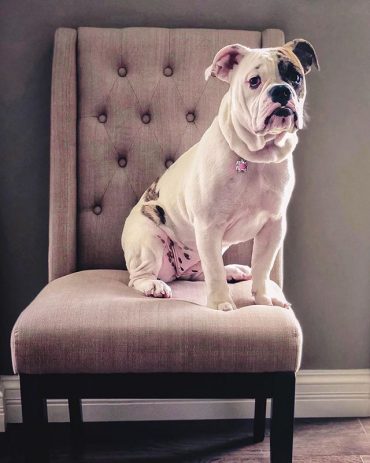
The Mollett Bulldog bears a resemblance to the modern English Bulldog with its stocky, muscular build and the characteristic Bulldog frown. There are a few distinct differences between the breeds, though.
Victorian Bulldogs have smoother faces and fewer wrinkles than their English Bulldog cousins. This reduces the risk of skin irritation or infection.
Victorian Bulldog muzzles are longer with wider nostrils, eliminating many of the English Bulldog’s breathing difficulties.
Mollett Bulldogs could have traditional corkscrew tails or straight tails. Likewise, they may have rosebud or button ears.
Their coats are generally short, smooth, and dense. Victorian Bulldog fur is usually white, red, brindle, or fawn and can be solid or pied. These dogs are mostly lighter in color. You’ll rarely see a Victorian Bulldog from the Mollett line with a black coat.
This is a good time to note that Victorian Bulldogs are not hypoallergenic. This breed can do its fair share of shedding, so keep that in mind if you’re sensitive to pet hair.
How big does a Victorian Bulldog get?
Mollett Victorians are a bit bigger than English Bulldogs. On average, full-grown male Victorian Bulldogs will weigh 65 to 75 pounds (29 to 34 kg) and stand 17 to 19 inches (43 to 48 cm) tall.
Females are slightly smaller, weighing in at 55 to 65 pounds (25 to 29 kg) and measuring 16 to 18 inches (41 to 46 cm) at the withers.
Their hind legs stand a couple of inches taller than their front legs, and they range from medium to large in size.
Most Victorian Bulldog puppies will weigh around 10 pounds (5 kg) at eight weeks of age. They should reach their full size between 1 to 2 years old.
If you live in an apartment or don’t have a spacious yard, you may be wondering if you have enough room for a Victorian Bulldog. Despite their size, these dogs are actually perfect fits for small spaces, thanks to their laidback attitude.
Temperament: Are Victorian Bulldogs good pets?
Mollett Bulldogs are the quintessential family dog. You’ll love watching Victorian Bulldogs grow from playful, rambunctious pups to mellow adults.
You’ll see this versatility in their temperament from an early age. These patient pooches are gentle enough to play with young kids but lively enough to keep up with the older ones. Just look at this video of how calm a senior Victorian Bulldog is with this baby!
Victorian Bulldogs don’t have much of a prey drive, either. If they’re raised around other pets, they should get along with everyone in your pack, even the small ones.
That socialization piece is huge, though. If you don’t introduce your Victorian Bulldog pup to different people and pets while they’re young, they may see other animals as potential threats instead of future friends.
These Bulldogs will enjoy meeting new people, however. Mollett Victorians are sociable and happy-go-lucky. More human friends mean more cuddles–a Victorian Bulldog’s favorite thing.
In fact, if your Mollett Bulldog goes too long without snuggles and affection, you may see destructive behaviors crop up. Reciprocate your pup’s devotion, and you’ll have a calm, contented dog.
Are Victorian Bulldogs aggressive?
Think your Victorian Bulldog will be a little too inviting? Think again. With a deep bark and a strong protective instinct, this breed is a tried and true guard dog, but not aggressive.
They don’t bark much, so when they do, you’ll know they’re alerting you to possible danger.
Victorian Bulldogs are also quite skilled at intuitively knowing the difference between welcome house guests and menacing intruders. You’ll never have to worry about one of these canines around.
When it’s all said and done, Victorian Bulldogs want nothing more than to keep their families safe, happy, and close by. This breed is ideal for dog owners who love doting on their pups and want their dogs to truly feel like part of the pack.
Early training is the best way to snuff out unwanted behaviors in your Victorian Bulldog. A well-educated dog is far less likely to display aggression, dominance, or impulsiveness.
The Mollett Victorian’s intelligence and “teacher’s pet” personality means their training should be a breeze.
Positive reinforcement methods are considered ideal, but there are many ways to implement a solid training regimen. Whatever your routine, you want to be sure that you match your Victorian Bulldog’s gentle demeanor with gentle training.
In addition to basic obedience, you’ll need to expose your Mollett Bulldog to different situations and experiences from a young age.
Once they’ve been fully vaccinated, start taking them with you to the pet supply store or the park, or even when visiting the neighbors.
Use these opportunities to teach your pup how to interact with people and animals, and to properly alert you when they’re feeling uncomfortable. The more you can reinforce your position as your Bulldog’s trustworthy leader, the more you can trust your dog in turn.
The goal is to become their compass and their guide book, so to speak. Point them in the right direction, show them what to do, and it’ll be smooth sailing for you both.
Taking care of your Victorian Bulldog
Adding to the list of pros for the Victorian Bulldog, this breed is low-maintenance.
Of course, you’ll need to tend to a few basics, like grooming and exercise. For the most part, though, Mollett Victorians require very little additional upkeep.
Grooming and coat care
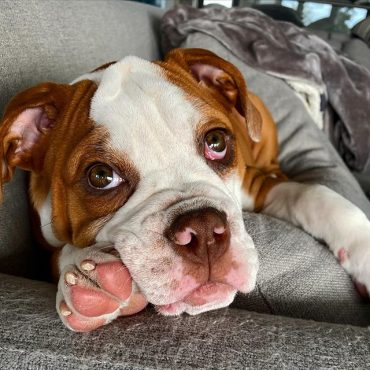
Victorian Bulldogs shed moderately year-round, with heavier shedding as seasons change. Expect to see more loose fur around the house when winter turns to spring and again when temperatures cool off in the fall.
To keep stray dog hairs at bay, use a firm-bristled brush 1 to 2 times a week. You can increase this amount as needed.
Bathe your Mollett Bulldog when they’re particularly dirty, taking extra care to thoroughly dry their skin folds. Avoid bathing too frequently, as shampoo can irritate your pup’s skin.
A better approach is to run a damp cloth between your Victorian Bulldog’s wrinkles every day, followed by a dry cloth. This prevents dirt and moisture from building up and wreaking havoc on your pup’s delicate skin. Improper or irregular skin care can lead to irritation and infection in Bulldogs.
While you see to your dog’s wrinkles, take a few moments to inspect their ears and eyes. Gently wipe away any gunk or debris. If you notice signs of pests or infection, have your vet take a look as well.
It’s a good idea to brush your Victorian Bulldog’s teeth regularly, too. Plan on 2 to 3 times a week. If they let you brush their pearly whites more frequently, go for it!
Diet: The best food for a Victorian Bulldog
Depending on their size and activity level, your Mollett Victorian should receive between 1 ½ to 3 cups of food per day.
High-quality dry food is always a safe choice, but some canine aficionados swear by raw feeding.
Raw diet supporters claim that raw meats are better for dogs’ coats and joints. Other experts, including the American Veterinary Medical Association, have said outright that raw diets are risky and potentially dangerous.
Safely switching your dog to a raw diet can be complicated and time-consuming. You have to balance your dog’s nutrients yourself. Plus, there’s the ever-present risk of bacterial contamination.
As such, raw feeding simply isn’t a good idea for busy families, families with young children, or immunocompromised dog owners.
If you’ve done your research and feel that you can correctly implement a raw diet, do so only in consultation with your vet. If we lost you at “complex and time-consuming,” stick with regular kibble. Your pooch won’t mind either way.
How much exercise do Mollett Victorians need?
Could watching Netflix or napping on the couch be your full-time job? Does the thought of running a 5k make you wince in agony? That’s just one more reason to consider a Victorian Bulldog. These dogs are lazy with a capital L, but regular activity is crucial to keeping your Bulldog healthy. Aim for 40 minutes of daily exercise.
This doesn’t have to happen all at once. In fact, it’s better if your Victorian Bulldog has one or two short walks mixed in with a little playtime.
Brief exercise sessions are particularly important in extreme temperatures.
The heat- and cold-intolerant Victorian Bulldog is best suited for moderate climates. In areas with boiling summers or frigid winters, your Mollett Victorian Bulldog will have a hard time regulating its temperature. If you’re not careful, this can lead to overheating.
Find weather-appropriate ways for your Victorian Bulldog to let off some steam, and don’t be afraid to get creative!
Some Mollett Victorians enjoy swimming. No pool? No problem. A mid-morning game of tag with the water hose will tire out your pup while keeping them cool.
If temperatures keep you inside, classic doggie games are just the ticket. Tug-o-war never gets old. And if you have a staircase, toss one of your pooch’s toys to the top for a modified game of fetch. Just be sure to give your Victorian Bulldog plenty of time to rest and rehydrate afterward!
How long does a Victorian Bulldog live?
Thanks to careful breeding, true Victorian Bulldogs are incredibly healthy canines.
The average lifespan for this hybrid is 10 to 12 years on average, but some have been known to live as long as 15 years!
Genetic diseases are quite rare in this crossbreed, but the Victorian Bulldog is still at risk of certain health problems.
The ultimate couch potato, Mollett Victorians are prone to obesity and weight-related illnesses. Overweight Victorian Bulldogs are more likely to experience issues with their respiratory system or their joints.
Victorian Bulldogs may also be predisposed to skin allergies and eye problems. Some of these eye conditions can go undetected for a long time without routine vet care, so make sure your pup has a check-up at least once a year.
Where can you buy a Victorian Bulldog?
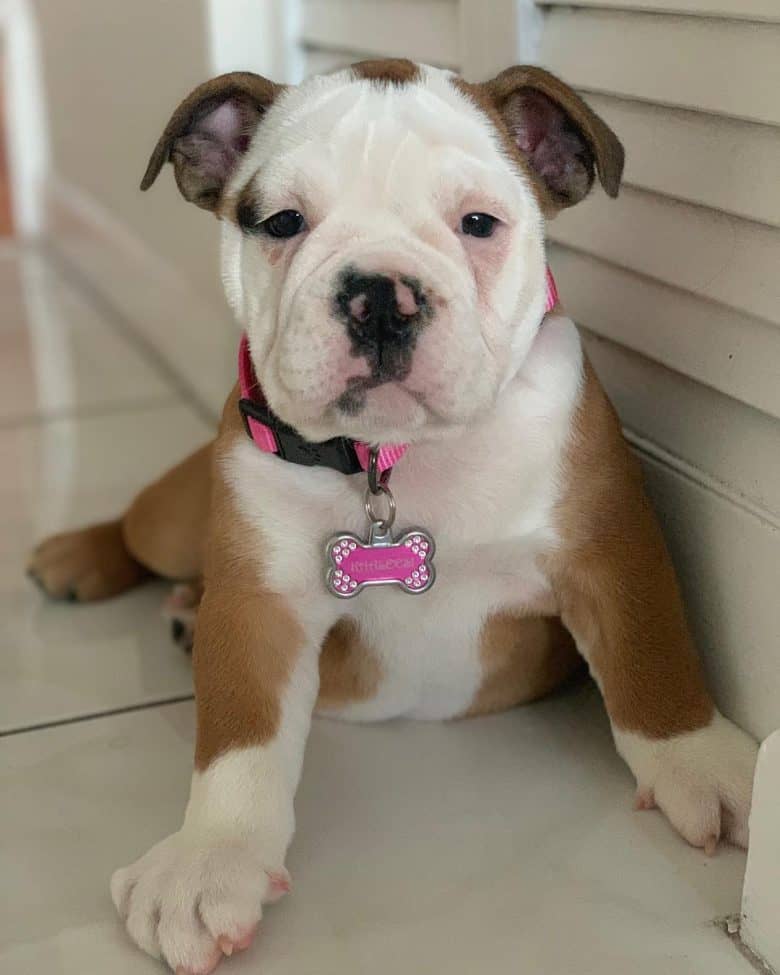
We’ll go ahead and rip off the Band-Aid: Mollett Victorian Bulldogs are difficult to find outside of the UK.
Some breeders claim to have Victorian Bulldogs, but it’s not always guaranteed that these pups come from the original Mollett line or that they’re even true Victorian Bulldogs.
Because this breed is so rare in the US, they come with a hefty price tag. Victorian Bulldog puppies usually cost between $1500 to $3000, though some breeders charge as much as $5000.
How much you pay depends in part on the parents’ pedigrees and the litter size. Victorian Bulldog litters generally have 3 to 5 puppies. If your pup has fewer siblings, you’ll pay a bit more.
Victorian Bulldogs breeders and kennels
Since this crossbreed isn’t as common in the US, you should be that much more discerning when it comes to choosing a breeder.
Only consider breeders or kennels that let you visit in-person before collecting any payment. Ideally, you should stop by a couple of times.
On your first visit, get to know the breeder, ask questions, and take note of the puppies’ and their parents’ living conditions. Eliminate any breeders that won’t let you visit, can’t (or won’t) answer your questions, or don’t take exceptional care of their dogs.
During your second round of visits, you can take the time to interact with the puppies, knowing that one of those baby Bulldogs will soon be yours.
If you want an original Mollett Victorian Bulldog, you can go straight to the source and buy from Mollett Victorian Bulldogs America.
If you’re not particular about your pup’s bloodline, check out Greenfield Puppies.
Victorian Bulldog rescue
You could also consider rescuing a Victorian Bulldog. While you’re giving a doggo another chance at life and love, it’s good to know that adopting is also cheaper. Adoption costs for this pooch are usually around $50 to $400, depending on the shelter.
The Bulldog Club of America Rescue Network and No Borders Bulldog Rescue each have listings of adoptable Bulldogs from all over the country.
What other Bulldog types are out there?
Victorian Bulldogs are fantastic family pets, but they’re not perfect for every family. There are other Bulldog varieties that may be better suited to your lifestyle and living situation.
Victorian Bulldog vs. American Bulldog
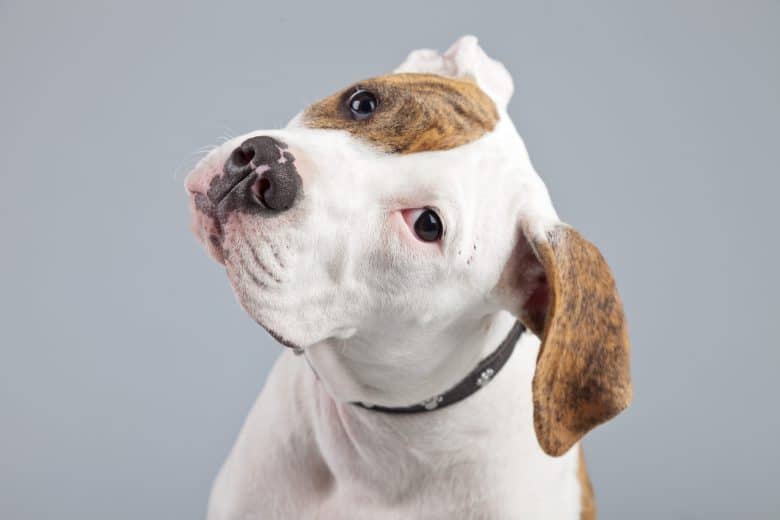
American Bulldogs are considerably larger than Victorian Bulldogs, weighing in at 70 to 120 pounds (32 to 54 kg) and measuring 22 to 28 inches (56 to 71 cm) tall. They generally have broad, square heads and athletic bodies.
This breed is an excellent choice for experienced owners who want a high-energy watchdog.
American Bulldogs love their families fiercely, but they have a territorial streak. They require frequent socialization and activity to keep their protective instincts from running amok.
Victorian Bulldog vs. English Bulldog
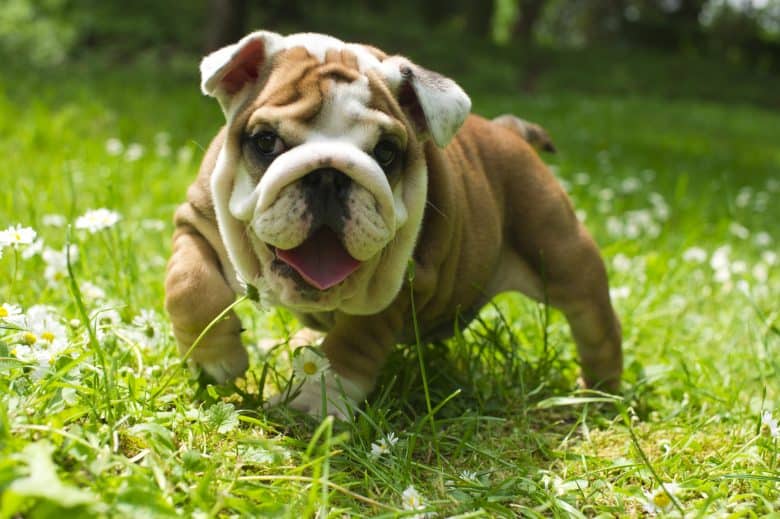
We’ve mentioned the English Bulldog a few times here. This mid-sized Bulldog has a build similar to its Victorian cousins: English Bulldogs weigh around 40 to 50 pounds (18 to 23 kg) and stand 12 to 15 inches (30 to 38 cm).
With a goofy, sweet-natured temperament, these pups are ideal companions.
English Bulldogs are loaded with health issues, though. As a result, they require a considerable amount of care and money to maintain.
Victorian Bulldog vs. French Bulldog
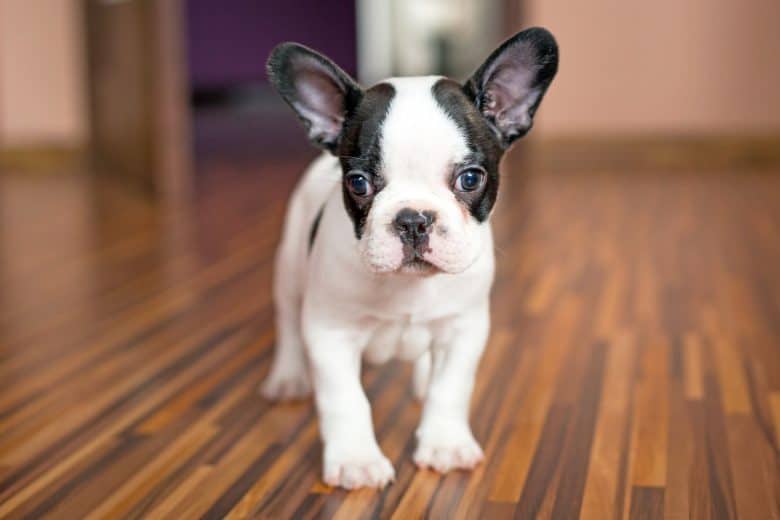
If other Bulldogs are simply too big, look into getting a French Bulldog. A full-grown French Bulldog will weigh 20 to 28 pounds (9 to 13 kg) and stand a mere 11 to 12 inches (28 to 30 cm) tall.
Full of spunk, French Bulldogs will keep you entertained with their antics. This breed likely won’t enjoy entertaining your kiddos, however. French Bulldogs prefer adult company and aren’t the best choice for homes with young children.
Will this resurrected breed join your ranks?
The Mollett Victorian Bulldog is a canine blast from the past. Healthier than today’s English Bulldogs, Mollett Victorians give you all the fun without the fuss.
Whether you live alone or with a huge family, your Victorian Bulldog will be totally content–as long as you shower it with love and affection.
What are your thoughts on this revived crossbreed? Tell us in the comments!
Reference
Cess is the Head of Content Writing at K9 Web and a passionate dog care expert with over 5 years of experience in the Pet Industry. With a background in animal science, dog training, and behavior consulting, her hands-on experience and extensive knowledge make her a trusted source for dog owners.
When not writing or leading the K9 Web content team, Cess can be found volunteering at local shelters and participating in dog-related events.
